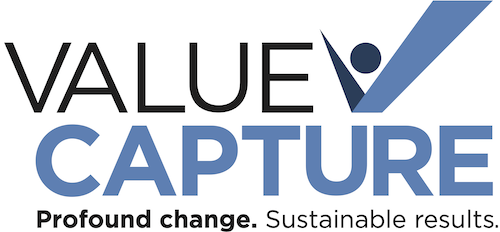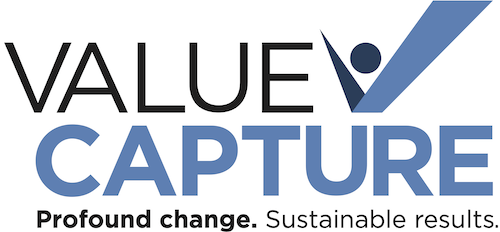Leadership for Habitual Excellence
“With leadership, everything is possible. Without it, nothing is.” — Paul O’Neill, Sr.
 This quote from the late Paul O'Neill is, quite simply, the foundation of the way Value Capture approaches our work with healthcare leaders who seek to transform performance throughout every corner of their organizations.
This quote from the late Paul O'Neill is, quite simply, the foundation of the way Value Capture approaches our work with healthcare leaders who seek to transform performance throughout every corner of their organizations.
Based on our extensive experience, we believe that an organization cannot achieve and sustain habitual excellence unless the most senior executive leader actively, personally leads the way.
What is Leadership?
First, let’s start with a basic definition. Merriam-Webster Dictionary defines leadership as: “A position as a leader of a group, organization, etc.”
Frankly, this somewhat circular definition is not all that helpful on its own.
While formal leadership roles are important, there are also informal leadership relationships — when people choose to follow somebody based on that individual's characteristics and behaviors.
Looking at several business-oriented sources, I think we can all agree that leadership is, essentially:
That social influence can come from formal or informal leaders.
There are many articles, courses, workshops and other resources that dive more deeply into aspects of leadership. These include, for example:
- x-number of traits of effective leaders
- research into what types of people make excellent leaders
- how leaders can manage organizational change
- how to lead meaningful meetings
- how to make meetings safe for people to speak up
It seems clear, therefore, that the act of leading successfully is a matter of great interest and significance. And it’s not just leaders and managers who are interested, it is also the people who are on the teams of leaders and managers, such as frontline supervisors and employees.
After all, employees at all levels rely on their leaders (and their leaders’ leaders) to provide the training, support and other guidance that gives purpose to their work and helps them succeed in their careers.
We would add that leaders should also take steps to ensure that work gives meaning to employees’ lives (more on that below).
Where to Begin: Principles
The Shingo Institute’s research and education teaches that a principle is a foundational rule that governs consequences, whether we want to believe in the principle or not.A handy example is the physical principle of gravity. Think of what can result, good and bad, when we behave in accordance with gravity (we take the stairs to leave the second floor of a building and exit the building unhurt), and when we do not (we step out the window of the second floor and break bones when we land on the pavement).
Principles of human interaction likewise govern consequences. Consider the Shingo Guiding Principle of “Respect Every Individual.” Where and when leaders do not treat employees respectfully, employees become frustrated, unengaged and turnover, and costs, increase.
Paul O’Neill, Sr., who served as Value Capture’s non-executive chair until his passing in 2020, often stated his view that for an organization to have the potential to be habitually excellent, everyone in the organization must be able to answer “yes,” every day, to three questions:
- Am I treated with dignity and respect by everyone I encounter?
- Am I given the resources I need to make a contribution to the organization that adds meaning to my life?
- Is my work recognized by someone whose opinion matters to me?
At the root of these three questions is respect. Consider your own organization, your own chain of command (those you report to and those who report to you). Can you answer yes to these questions, every day? Can your colleagues and teams answer yes?
In reality, you can probably only answer for yourself, not for others. We believe it is important that leaders know the answers their teams give, which is why every member of the Value Capture team is asked these questions (and others) every single week. Proactively seeking such information from each member of an organization is in itself an act of respect, as is the follow-up to the “no” answers received.
Learn more and download our weekly team survey, “Why (and How) We Do a Pulse Check of Every Team Member Each Week.”
Learn more about the three questions.
Learn more about the Shingo Guiding Principles and principles-based leadership:
- “What are the Guiding Principles of the Shingo Model?”
- “Respect Every Individual - The Obligation to Act”
- “Respect Every Individual” (Shingo Institute video)
Leaders Articulate Non-Arguable Goals: Zero Harm
Paul O’Neill, Sr. was well known as a strong proponent for creating the culture and systems needed to drive worker and patient harm events to zero.
He rightly asked the question of leaders, “would you please raise your hand if you volunteer to be harmed at work or as a patient?” He would also ask leaders, “What do you want your legacy to be?”
“I believe it's a really important critical role for a true leader to articulate non-arguable goals. So I want to tell you some non-arguable goals. I'm going to start with my favorite thing - in a really great organization, the people in it are never injured at work.”
He would often refer to the goal of perfect safety as “unarguable.” This is a most powerful guidepost for leaders to align and energize action throughout their organization. With a leader driving this principle into the enterprise, supporting and empowering the systems that enable everyone to work toward zero harm, incredible things happen.
Learn more about our view on zero harm as a goal.
Paul O’Neill eBooks on leadership:
- “A Playbook for Habitual Excellence: A Leader’s Roadmap from the Life and Work of Paul H. O’Neill, Sr.”
- “Lasting Impact: Leaders Share Lessons from Paul H. O’Neill, Sr.”
Other insights on Zero Harm:
- “Habitual Excellence Starts with Safety: Before, During and after a Crisis” (webinar with Prisma Health executive Mike Bundy and The Leapfrog Group’s Missy Danforth, VP, Health Care Ratings)
- Ken Segel on Habitual Excellence and Zero Harm
- More insights and resources from Value Capture on zero harm
The Heartbeat of Every Organization - Culture
Value Capture advocates for leaders to ensure that the guiding principles of excellence are driven throughout the organization, and that the systems drive the desired behaviors of excellence.
“If you don’t manage the culture, it will manage you.”
Why do we mention “behaviors?” The collective behaviors of everyone in an organization demonstrate its culture.For example, where a common behavior is to disregard or denigrate someone who calls out a safety issue, the culture of that organization would be one of disrespect, fear and probably poor performance.
On the other hand, where managers, mid-level leaders and executive leaders seek and reward call-outs of safety (and other issues), the culture is one of respect, learning, innovation and probably good or even excellent performance.
It is the leader that sets the tone and models the behaviors that embody a culture of excellence.
That is not enough, though.
Leaders must get out into the organization, where the work is done, to observe whether behaviors match the culture the leader believes is the organizational culture. Leaders cannot, and should not, rely solely on reports filtered up through the chain. Go, observe, ask questions (to learn, not to instruct), support employees and thank them for their contributions (see the three O’Neill questions).
Culture is not a fire-and-forget exercise; leaders must continually explore and understand if the culture is what it should be. When culture is not at the level desired, leaders must take steps to learn why and pursue plans to close gaps.
Learn more from these leaders and their approaches to culture, zero harm, and their guiding principles:
- Rhonda Brandon on Culture, Dignity, Respect, and Excellence in Care
- “Applications of Lean Leadership Methods in Home-Based Care” - Highlights from the Webinar
- Improving Patient Experience through a New Primary-Care Process at Sutter Health (case study)
- Samuel Ashby, Legacy Health, on Fostering a Resilient Culture in Healthcare
- University of Virginia Health System: Improving Patient Outcomes and Reducing Cost (case study)
- “We Have Gotten Too Far from Our People and the Core Processes They Perform Every Day.”
- “Observing to Better Understand: The Davis Way at Davis Health System.”
- “Psychological Safety Means it’s Safe to Ask for Help When You’re Unsure.”
More Information from Leaders in Healthcare
Leadership for Safety, Problem Solving, and Continuous Improvement at Duke HomeCare and Hospice (podcast episode)
“Applications of Lean Leadership Methods in Home-Based Care” (webinar recording)
“A Lifetime of Principles, Learning and Leadership” (a case study about Paul O’Neill)
“The Irreducible Components of Leadership Needed to Achieve Continuous Learning and Continuous Improvement.” (Paul O’Neill speech given to healthcare CEOs at an event sponsored by the Tennessee Hospital Association and BlueCross Blue Shield of Tennessee
UMass Memorial Health Care CEO Dr. Eric Dickson on CEO Leadership during COVID - No Layoffs, No Furloughs
WellSpan Health CEO Roxanna Gapstur, Leading the Creation of a Lean Management System
Legacy Health CEO Kathryn Correia on a CEO’s Role in Better Delivering the Mission
Virginia Secretary of Health and Human Services Dr. Dan Carey on Leadership and High Reliability Organizations
Health Care Workers Protect Us. It’s Time to Protect Them. (Five Leadership Imperatives from Dr. John Toussaint and Ken Segel)
Davis Health System CEO Vance Jackson on Leading Lean Transformation (LeanBlog podcast)



